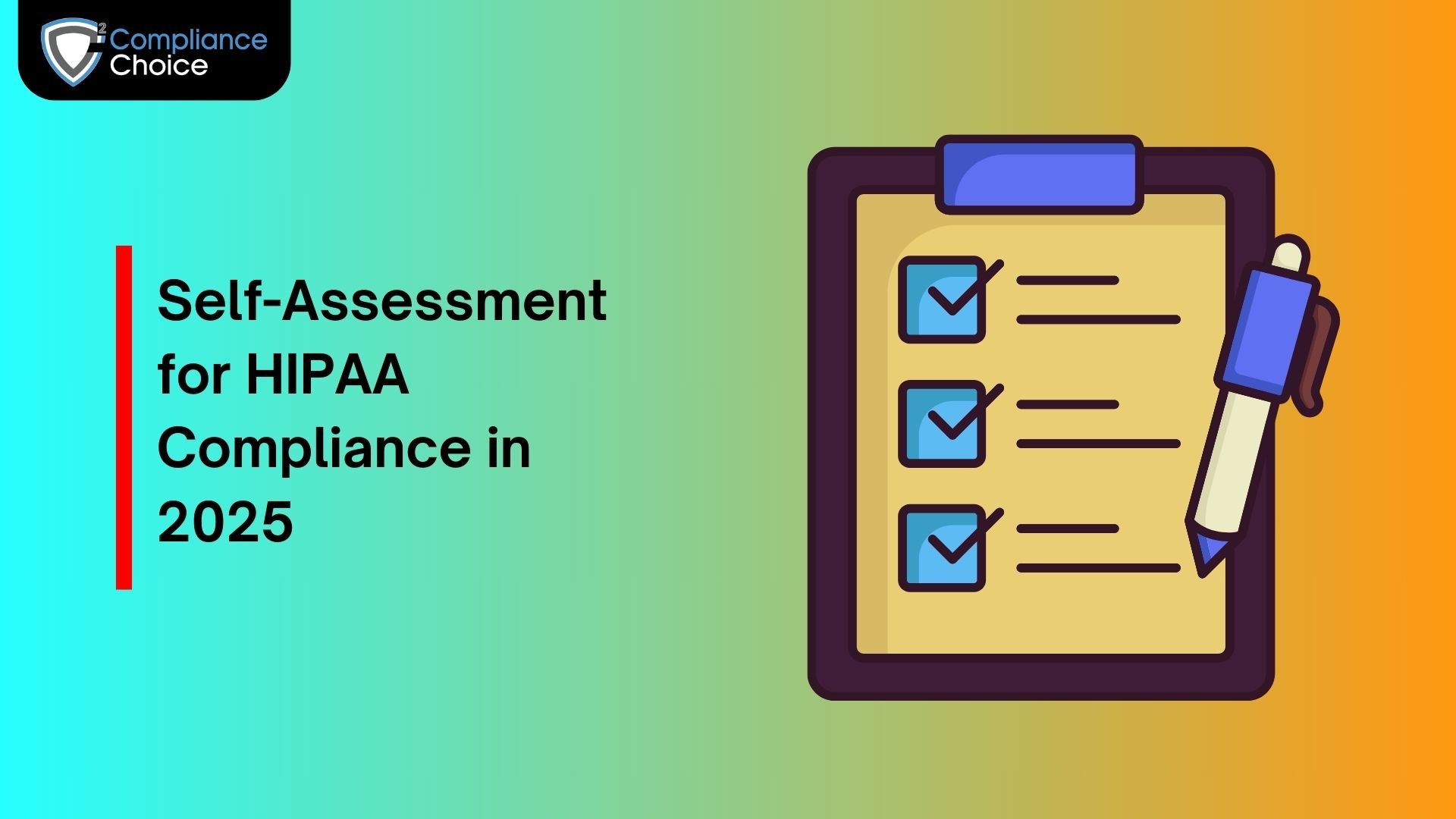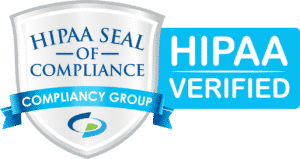HIPAA (Health Insurance Portability and Accountability Act) compliance is crucial for independent doctors who handle patient information. Compliance not only protects patient data but also helps avoid severe penalties and builds patient trust. However, HIPAA can be overwhelming for individual physicians and small practices. The following steps explain HIPAA compliance, requirements, the Perform a Self-Assessment process, and best practices for independent doctors in simplified language.
What is HIPAA Compliance?
Prior to getting into the details of a self-assessment, it’s necessary to define what HIPAA compliance is. HIPAA is an acronym that stands for Health Insurance Portability and Accountability Act, which was enacted in 1996 with the purpose of safeguarding health information. HIPAA sets standards for handling PHI (Protected Health Information), including:
- Privacy Rule: Ensures individuals’ health information is protected from unauthorized access.
- Security Rule: Outlines the standards for securing electronic PHI (ePHI) through administrative, physical, and technical safeguards.
- Breach Notification Rule: Mandates that covered entities and business associates report breaches of unsecured PHI.
HIPAA Healthcare Compliance Risk Assessment helps organizations minimize the risk of security breaches, protect patient privacy, and avoid severe penalties. In 2025, the regulatory landscape continues to evolve, making regular assessments and audits vital.
Why Perform a HIPAA Self-Assessment?
A self-assessment is a proactive method for evaluating your practice’s adherence to HIPAA compliance. Rather than waiting for an audit or dealing with the consequences of a data breach, a self-assessment allows organizations to evaluate their practices and correct any issues before they escalate. Here are the key benefits of performing a self-assessment:
- Identify Vulnerabilities: Self-assessments help identify gaps or vulnerabilities in your current security and privacy practices, allowing you to address them before they lead to a breach.
- Stay Up-to-Date with Regulations: HIPAA regulations can change frequently, and performing regular assessments ensures your practices are align with current standards.
- Avoid Penalties: Non-compliance with HIPAA can result in hefty fines and reputational damage. A self-assessment can help prevent these consequences by ensuring you meet all necessary requirements.
- Improve Security Posture: Through self-assessment, organizations can enhance their security measures, protecting sensitive patient information from cyberattacks and unauthorized access.
Review HIPAA Privacy and Security Rules
First and foremost, understanding and reviewing the HIPAA Privacy and Security Rules is necessary for performing a HIPAA security rule self-assessment. These rules provide the foundational framework for how you handle and protect PHI and ePHI within your organization.
Privacy Rule Review
Start by examining the policies and procedures of your organization regarding the Privacy Rule. The Privacy Rule specifies the guidelines on how PHI is collecte, use, and disclose. Ensure there are clear procedures for obtaining patient consent before disclosing their health information and that only authorized personnel have access to sensitive data. Additionally, verify that PHI is kept in a secure place and unauthorized access is not allowed.
Security Rule Review
Next, identify the Security Rule, which pertains to ePHI, and this will require implementing the administrative, physical, and technical safeguards. Some of the requirements of administrative safeguards include the policy to protect ePHI and designation of a security officer. Physical safeguards ensure that physical threats, such as theft or unauthorize access to storage areas, will not compromise ePHI. Technical safeguards mainly include encryption, access controls, and monitoring systems to detect security breaches and ensure a prompt response.
Conduct a Risk Assessment
One of the core components of HIPAA compliance is risk management. A thorough risk assessment will help you identify vulnerabilities in your current security systems, policies, and practices.
Identifying Potential Threats
Begin by identifying all potential threats to PHI and ePHI. Consider internal threats, such as employee error or insider threats, and external threats, including cyberattacks or physical theft. Assess how your organization handles sensitive data in both transit and at rest, and identify gaps that may expose PHI to unauthorized access.
Risk Mitigation Strategies
Once risks have been identified, develop strategies to mitigate these threats. Key measures include encrypting data both at rest and in transit, using secure passwords and multi-factor authentication, and establishing clear policies for data breach response, outlining employee roles in preventing and addressing security incidents.
A well-documented risk assessment process helps your organization understand where it stands in terms of HIPAA compliance and where improvements can be made.
Assess Data Access and Authentication Controls
HIPAA requires that access to PHI is restrict to authorize personnel only. This includes both physical access to records and electronic access to ePHI. It is crucial to assess your organization’s access control policies to ensure they are aligned with HIPAA requirements.
Role-Based Access Control
Review role-based access policies to ensure that no employee has more access than necessary for their specific job functions. For example, administrative staff should not have access to sensitive patient medical records unless absolutely necessary. These limit unauthorized access to PHI by restricting access to only those employees who need it for their specific job functions.
Authentication and Audit Trails
Ensure that the organizations you represent protect PHI access via secure employee authentication, such as multi-factor authentication. Additionally, ensure that audit logs track who accessed the PHI and at what time. Regularly reviewing these logs helps identify anyone attempting to access PHI without authorization, which promotes better HIPAA compliance.
Review Your Incident Response and Breach Notification Plans
HIPAA requires that organizations notify affected individuals and the Department of Health and Human Services within certain time frames in the event of a breach. Your Perform a Self-Assessment should evaluate your organization’s incident response and breach notification protocols to ensure they meet HIPAA requirements.
Incident Response Plan
Examine your organization’s incident response plan to ensure it is well-documented and up to date. This plan should outline clear steps for containing a breach, investigating the cause, and notifying relevant parties. In the event of a breach, your organization should be able to respond quickly and efficiently to mitigate the impact of the incident.
Breach Notification Procedures
Ensure that your organization can notify affected individuals within 60 days of discovering a breach, as required by the Breach Notification Rule. Your notification procedures should include clear communication with affected individuals and HHS. The notifications should describe the nature of the breach, the PHI involved, and steps individuals can take to protect themselves.
Implement Regular Training and Awareness Programs
Employee training is a critical element of HIPAA compliance. Without proper training, employees may inadvertently compromise the security of PHI, leading to potential breaches or non-compliance. It’s essential to conduct regular training sessions to ensure that all staff members understand the importance of safeguarding sensitive health information.
HIPAA Training for Employees
Review your organization’s HIPAA training program to ensure it covers essential topics, including the proper handling of PHI, recognizing phishing attempts, and reporting security incidents. Make sure that employees receive training at regular intervals and that new employees are onboarded with HIPAA training as soon as possible.
Continuous Education
HIPAA regulations can change over time, so continuous education is vital. Regularly update training materials to reflect any updates to the law or your organization’s policies. Employees should also be informed of any new threats, such as emerging cyberattacks, and how to recognize them. By investing in ongoing training, you help reduce the likelihood of human error and ensure that your staff remains informed about their responsibilities under HIPAA.
Evaluate Business Associate Agreements
HIPAA compliance is not only about your organization but also extends to any third parties that handle PHI on your behalf. This includes vendors, contractors, and business associates. It’s essential to review Business Associate Agreements (BAAs) with vendors and third parties regularly to ensure their compliance with HIPAA standards and your organization’s security policies.
Reviewing BAAs
Ensure that all vendors and third-party service providers who have access to PHI sign a Business Associate Agreement (BAA) that outlines their responsibilities for safeguarding the data. The BAA should include provisions for how the third party will protect PHI and comply with HIPAA regulations. Regularly review these agreements to ensure they remain up to date and enforceable.
Document Your Findings and Create an Action Plan
After completing the Perform a Self-Assessment, it’s essential to document your findings and develop a corrective action plan. This includes detailing any gaps in compliance and the steps your organization will take to address them.
Creating a Corrective Action Plan
Once you’ve identified areas for improvement, create a corrective action plan with clear timelines, designated responsible parties, and specific steps for resolving each compliance issue.
Conclusion
Perform a Self-Assessment for HIPAA compliance is an ongoing process that helps healthcare organizations stay ahead of regulatory requirements and protect sensitive patient information. For more assistance with your HIPAA compliance needs, visit Compliance Choice, a trusted resource offering comprehensive tools and solutions to help healthcare organizations maintain privacy and security. By staying proactive and regularly Perform a Self-Assessment, you can safeguard patient data, avoid penalties, and maintain patient trust.




